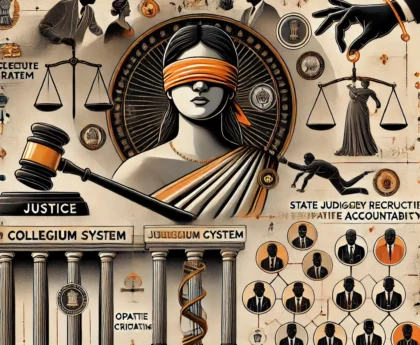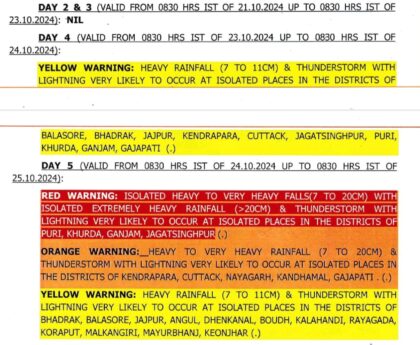The topic of suicide and death due to toxic work cultures and harassment in academic settings is a deeply tragic and critical issue. It touches on the harsh realities faced by individuals in their professional and educational lives, where pressures, bullying, harassment, or outright toxic cultures contribute to mental health deterioration and, in the worst cases, lead to suicide. In this article, we will delve into the following areas:
1. Introduction: Understanding Suicide and Toxicity in Work and Academic Settings
2. The Impact of Toxic Work Cultures: Root Causes and Effects
• What is a toxic work culture?
• Case studies and examples of suicide due to toxic work culture
• Impact on mental health, well-being, and relationships
• Harassment, exploitation, and workplace bullying
3. Suicide Due to Harassment in Academic Institutions
• Understanding academic harassment and bullying
• Examples and case studies of academic-related suicides
• How the pressure to succeed in academia impacts mental health
• Role of educators and academic institutions in perpetuating toxic environments
4. Legal and Ethical Dimensions
• What the law says about harassment and workplace abuse
• Lack of proper enforcement of mental health regulations in the workplace and academia
• Failures in existing support systems for victims of toxic environments
5. Psychological Insights and Risk Factors
• Psychological impact of continuous harassment and toxicity
• The burden of societal expectations and workplace performance metrics
• Underreporting of mental health issues
6. Preventative Measures and Interventions
• Role of HR in maintaining a safe work environment
• Importance of mental health programs and employee assistance programs (EAPs)
• Creating a culture of openness and mental health awareness
7. What Can Be Done: Institutional, Legal, and Societal Responsibility
• Responsibility of corporations and academic institutions in fostering healthy environments
• Building resilience in individuals facing toxic work and academic conditions
• How society can collectively address these issues
8. Conclusion: Changing the Narrative Around Toxic Cultures and Mental Health
1. Introduction: Understanding Suicide and Toxicity in Work and Academic Settings
The connection between mental health issues, toxic environments, and suicide is a complex and tragic one. Toxic cultures, whether at work or in academic settings, are often marked by power imbalances, unrealistic expectations, harassment, bullying, and isolation. While the world continues to make strides in discussing mental health openly, the harsh reality is that toxic workplaces and academic environments remain a significant trigger for suicides.
2. The Impact of Toxic Work Cultures: Root Causes and Effects
What is a toxic work culture?
A toxic work culture is defined by chronic stress, poor leadership, unhealthy competition, and a lack of support. Employees in such environments often feel powerless, overwhelmed, and burnt out. Toxicity can manifest in many forms—bullying by superiors or colleagues, unrealistic expectations, unpaid overtime, and a culture that prioritizes results over well-being.
Case Studies and Examples of Suicide Due to Toxic Work Culture
One high-profile example is the suicide of 24-year-old Mita Diran, an Indonesian copywriter, who passed away after working for 30 hours straight. Mita’s death shocked many, opening up discussions about work-life balance and the deadly effects of overwork in industries like advertising and tech, where “hustle culture” is glorified. Similar cases have been reported across industries where long hours and mental exhaustion are seen as badges of honor.
In 2019, an executive at France Télécom (now Orange) and two other officials were convicted of moral harassment linked to a wave of suicides by employees. Between 2008 and 2009, 35 employees took their own lives, citing unbearable work conditions, unreasonable targets, and emotional abuse as contributing factors.
Impact on Mental Health, Well-being, and Relationships
Toxic work environments lead to a deterioration in mental health, characterized by anxiety, depression, and suicidal ideation. Employees in such environments often isolate themselves from their families and friends, contributing to a vicious cycle of loneliness and despair.
Harassment, Exploitation, and Workplace Bullying
Workplace bullying is one of the significant contributors to toxic environments. Bullying can range from overt actions such as public humiliation, unfair workloads, and verbal abuse to more insidious behaviors like social exclusion and gaslighting. These behaviors chip away at an individual’s self-worth and mental well-being, leading to severe consequences.
3. Suicide Due to Harassment in Academic Institutions
Understanding Academic Harassment and Bullying
Academic environments, particularly in highly competitive institutions, can foster an environment of extreme pressure and sometimes bullying or harassment by faculty or peers. Students, especially those in graduate programs, face enormous pressure to perform, publish, and secure funding for research.
Examples and Case Studies of Academic-Related Suicides
In 2017, a tragic case in India highlighted the immense academic pressure students face. Rohith Vemula, a Ph.D. scholar at the University of Hyderabad, committed suicide after months of alleged caste-based discrimination. His case sparked a nationwide debate about the pressures faced by students from marginalized communities and the lack of institutional support for those facing discrimination.
In 2021, a Chinese student named Yang Xiaofei took his life after being publicly humiliated by a professor at his university. His story resonated with many students who face constant academic pressure, bullying, and harassment, often with little or no recourse.
How the Pressure to Succeed in Academia Impacts Mental Health
Academic success is often tied to self-worth, especially in cultures that equate high performance with personal value. This pressure, combined with a lack of mental health support, can lead students to feel trapped in an endless cycle of stress and inadequacy. The academic “publish or perish” culture, combined with the constant fear of failure, can have disastrous effects on a student’s mental health.
Role of Educators and Academic Institutions in Perpetuating Toxic Environments
In many academic settings, bullying from faculty members goes unchecked. Students are often afraid to report harassment for fear of academic retribution, further entrenching the cycle of abuse. Academic institutions, rather than acting as safe spaces for learning, often perpetuate toxic cultures by prioritizing institutional reputation over the well-being of their students.
4. Legal and Ethical Dimensions
What the Law Says About Harassment and Workplace Abuse
Most countries have laws in place to protect workers and students from harassment and abuse, yet enforcement is often inadequate. In many cases, victims do not come forward due to fear of retaliation, and legal systems can be slow to address grievances.
Failures in Existing Support Systems for Victims of Toxic Environments
Despite legal protections, there is a significant gap in providing adequate support for victims of workplace or academic harassment. Most organizations and academic institutions lack proper mental health support systems, or they are viewed as superficial measures rather than genuine efforts to improve well-being.

5. Psychological Insights and Risk Factors
Psychological Impact of Continuous Harassment and Toxicity
Prolonged exposure to a toxic environment can lead to severe psychological conditions. Continuous harassment, bullying, or feeling trapped in an oppressive environment can trigger chronic anxiety, depression, and post-traumatic stress disorder (PTSD). Over time, individuals may start to feel hopeless and believe that suicide is the only escape.
Underreporting of Mental Health Issues
One of the biggest challenges in addressing mental health issues related to toxic work or academic environments is underreporting. Fear of stigma, job loss, academic repercussions, or being seen as weak often prevents individuals from seeking help.
6. Preventative Measures and Interventions
Role of HR in Maintaining a Safe Work Environment
Human Resource departments play a crucial role in curbing toxic work environments. However, many HR departments are ill-equipped or unwilling to address these issues, particularly when it involves senior leadership or is tied to organizational culture. Effective HR intervention requires creating a culture of openness, where mental health and well-being are prioritized.
Creating a Culture of Openness and Mental Health Awareness
Workplaces and academic institutions must foster an environment that encourages open discussions about mental health. This involves breaking down the stigma surrounding mental health issues and promoting access to mental health resources like therapy, counseling, and support groups.
7. What Can Be Done: Institutional, Legal, and Societal Responsibility
Responsibility of Corporations and Academic Institutions
Corporations and academic institutions must implement robust policies to prevent and address toxic environments. This includes clear policies against harassment and bullying, confidential reporting channels, and regular mental health check-ins.
Building Resilience in Individuals Facing Toxic Conditions
While systemic changes are necessary, individuals also need tools to manage stress and build resilience. Access to mental health support, mindfulness programs, and stress management workshops can help individuals cope with toxic environments until larger changes are made.
8. Conclusion: Changing the Narrative Around Toxic Cultures and Mental Health
The tragic link between toxic work cultures, academic pressure, and suicide must not be ignored. By recognizing the systemic nature of these issues, enforcing legal protections, and promoting mental health awareness, we can create environments where individuals thrive, free from fear, harassment, and mental exhaustion.
This article would provide a comprehensive examination of the complex and heartbreaking issue of suicide due to toxic work and academic environments. If you’d like me to elaborate on specific sections, or need further details, feel free to ask!




2 Comments